If you're visiting South Florida for your upcoming cruise you should probably know about red tide. This algae can cause health issues and sometimes closes beaches - but doesn't mean you can't enjoy your pre or post-cruise stay. In the past several weeks there has been an occurrence of red tide, first on the Florida's west coast, and now on the east coast. We'll review the basic information, especially as it pertains to those about to cruise.
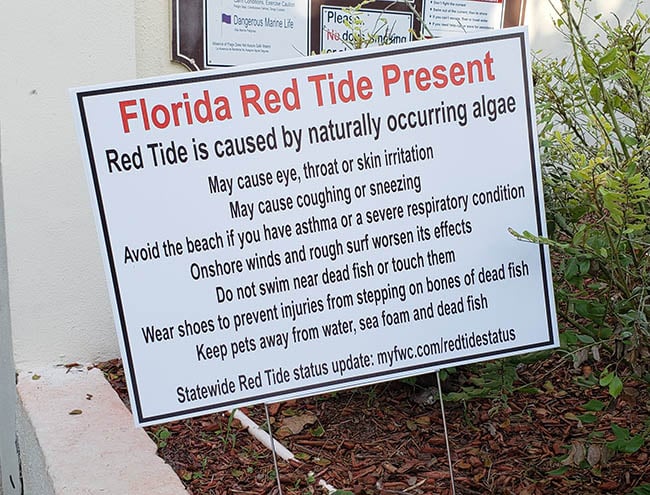
Red Tide Basics for Cruisers
What is Red Tide?
Red tide is a term used to describe a harmful algae bloom when it contains a high concentration of microscopic alga. It is a naturally occurring phenomenon and not believed to be directly tied to pollution or other human causes. Florida red tides generally refer to specific blooms (containing the algae Karenia brevis), but this can occur in other places. While these blooms are sometimes visible to the naked eye (coloring the water brown, green, purple, or red), the water can look perfectly blue and inviting even when there is a problem. In addition to a sometimes unpleasant color, red tides can kill marine life and pose a number of health problems for people near affected coasts - especially those with asthma or other respiratory issues. The phenomenon is most common between July and October along Florida's Gulf Coast, and currents may spread the bloom to Southeast Florida.
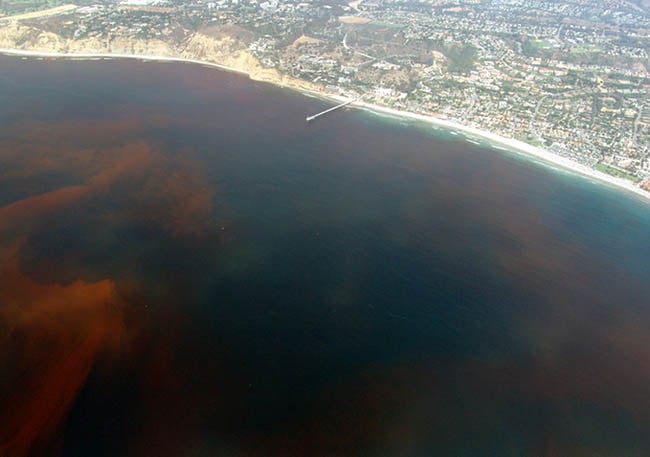
What Causes Red Tide?
There are a number of known causes but each occurrence doesn't necessarily have a clear origin story. Commonly, strong storms off shore can churn up nutrient-rich sea-life on the sea floor, causing a sort of feeding-frenzy for the microscopic alga. While natural events can trigger these blooms, climate change has caused ocean temperatures to rise, potentially expanding the area in which red tides can occur. Additionally, many scientists believe that we will see more frequent red tide events over time. Despite a number of potential causes and these events being hard to predict, their movement is a bit easier to forecast based on tides. There are also efforts underway to prevent red tides by reducing ocean outfall (discharge of wastewater, storm drains, etc into the sea via pipeline), as well as research into technologies that might be able to skim the decaying algae, which is the primary cause of the associated respiratory irritation.
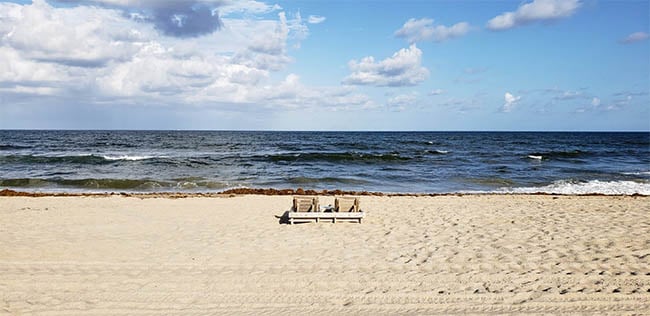
What Are the Health Affects of Red Tide?
Skin irritation, sore throat, irritated sinuses, and coughing is not uncommon after being in an area with red tide conditions. Depending on the scale and location of the bloom, this is generally only a problem at or very close to the shore, as ocean breezes tend to keep the irritants away from inland areas. Depending on the severity, a good rule of thumb is that if officials leave the beaches open, you're probably just fine for a quick visit or perhaps even a swim - but you may want to keep your visits short and head away from the beach to get away from any potential irritants. Of course if you have any doubts at all, especially if you suffer from asthma, COPD, or other respiratory ailments, consult a medical professional. If you do go in the water at all - or even if you spend a lot of time near the water, thoroughly rinse off in fresh water as soon as you leave.
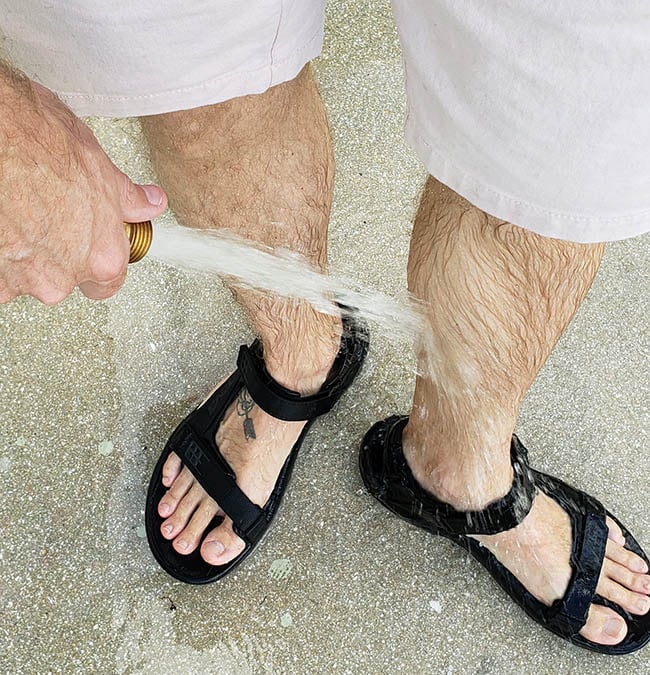
Will Other Ports on Our Cruise Visits Be Effected?
Not likely - though possible. Florida red tides generally develop 10-40 miles off the coast, and the rapidly moving currents which are guided by large land masses (like Florida) inform these routes. As of this writing neither the Bahamas or other areas of the Caribbean have been significantly impacted. Key West sometimes experiences red tides, but the State of Florida does not currently have any reports of red tide in the area.
How Will I Know if an Area is Effected?
First know that if conditions get too bad for officials to feel safe allowing the public to enjoy the beach, they'll close the affected beaches. Closures can last for a day or even weeks - but are generally quite brief. Most beaches in populated areas will have signage warning of red tide, and ranger stations, police officers, and others will hand out information about the condition and how it is impacting the beach you're at. There is also a flag system used for warning of different conditions at Florida beaches (rip-currents, hazardous marine life, etc), and the significance of each flag can be found on nearby signage. You can also check the map provided by the Florida Fish and Wildlife Conservation Commission.
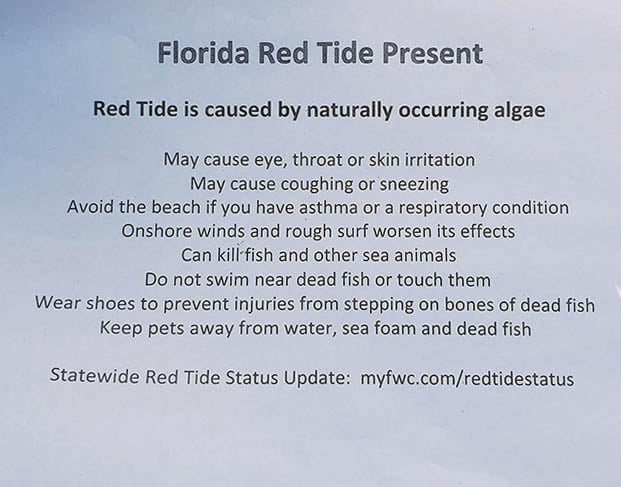
Final Thoughts on Florida's Red Tide
It's important to know about red tide, and yes, it could potentially interfere with your plans if you planned a beach day in South Florida - but maybe not. Currents can move these red tides out relatively quickly - other times they linger for months. Additionally, there are some days that are worse than others, so check with officials at the beach as well as the local news. If you're cruising out of South Florida, you're likely about to visit a number of other destinations with great (and currently unaffected) beaches - so if it's open, and you're healthy, take a short stroll on the beach. If conditions are such that being at the beach is uncomfortable (or beaches close), spend your time enjoying many of the other great things that South Florida has to offer and get ready to enjoy other fantastic destinations on your cruise. We always recommend visitors consider an airboat tour of the Everglades if you want something uniquely Florida, fun, and educational!
Thanks to friend and fellow cruiser Nick V for lending his expertise to this post.

